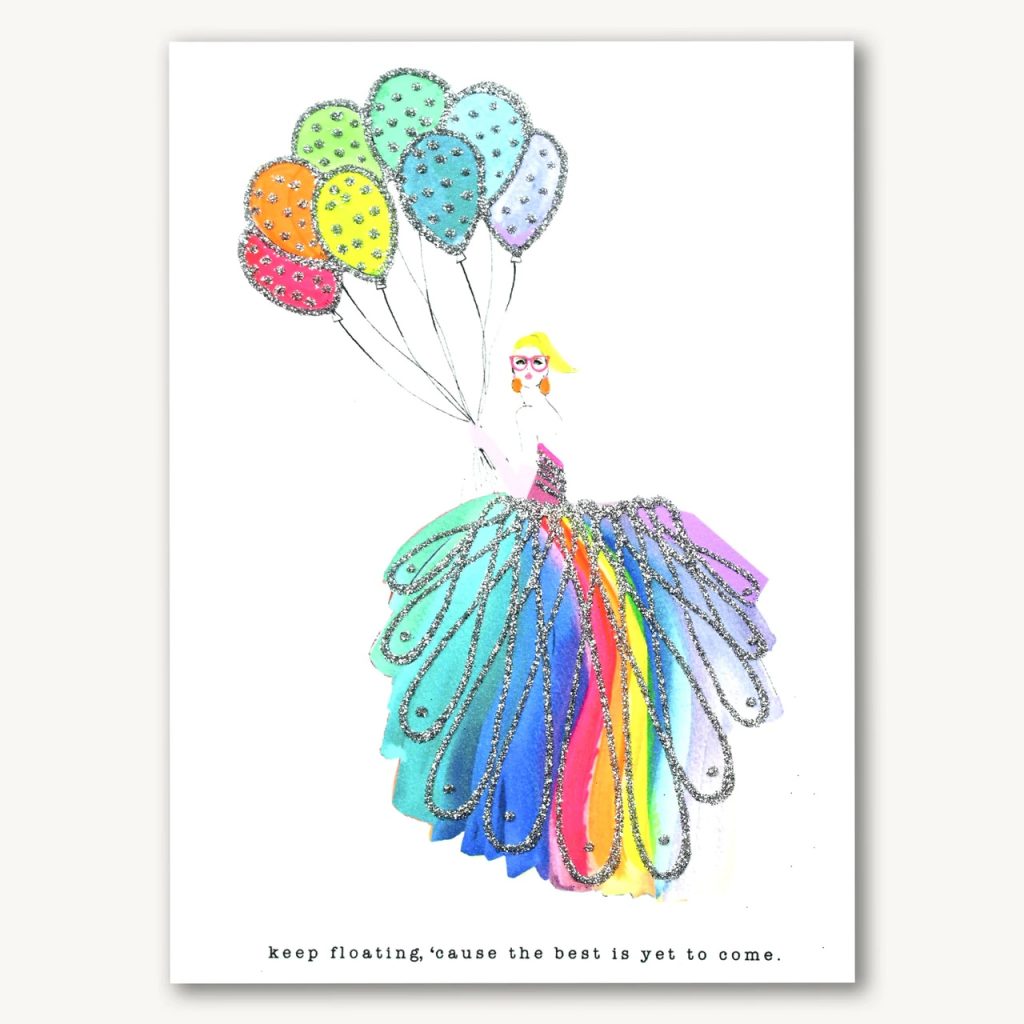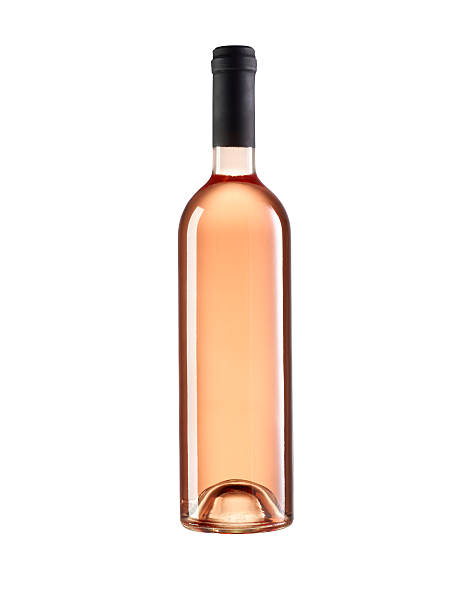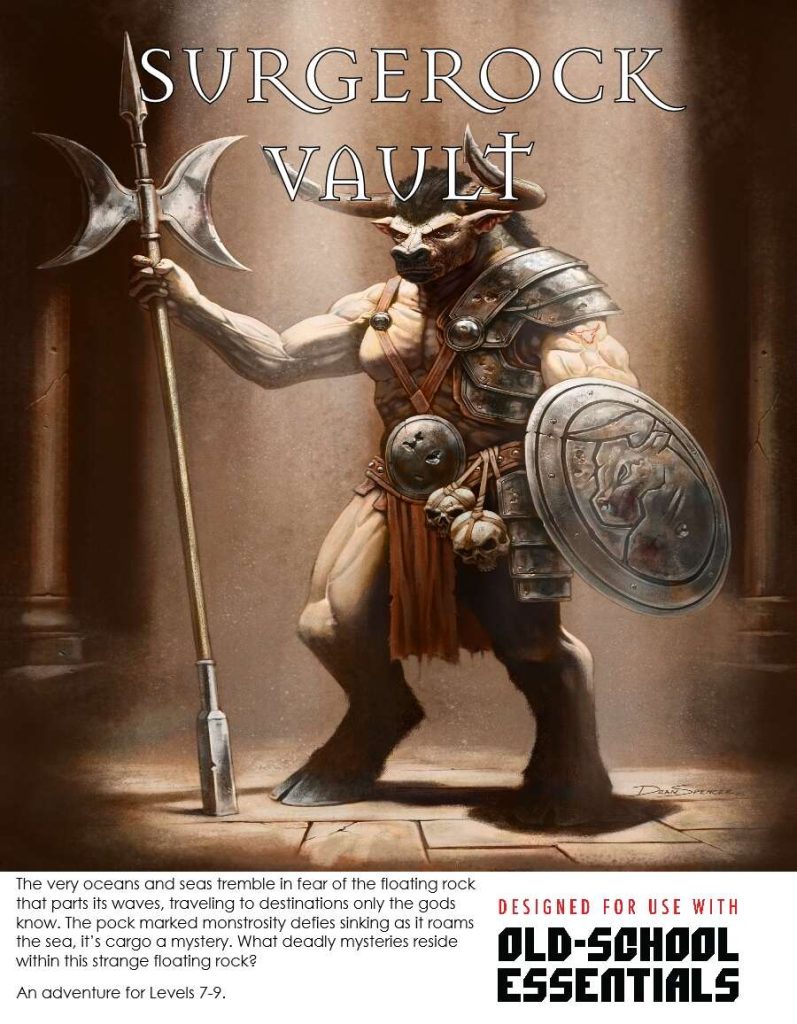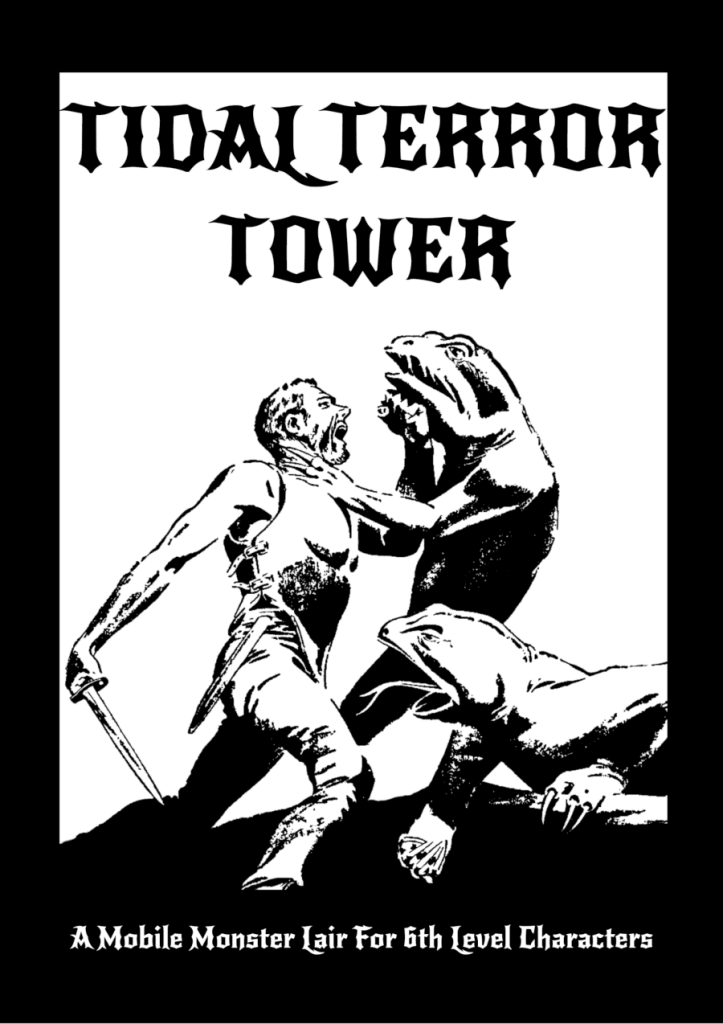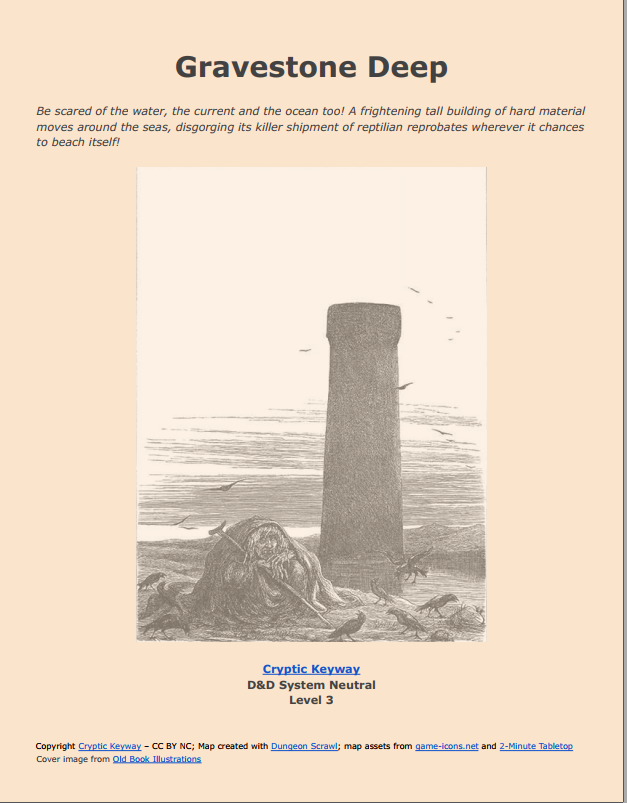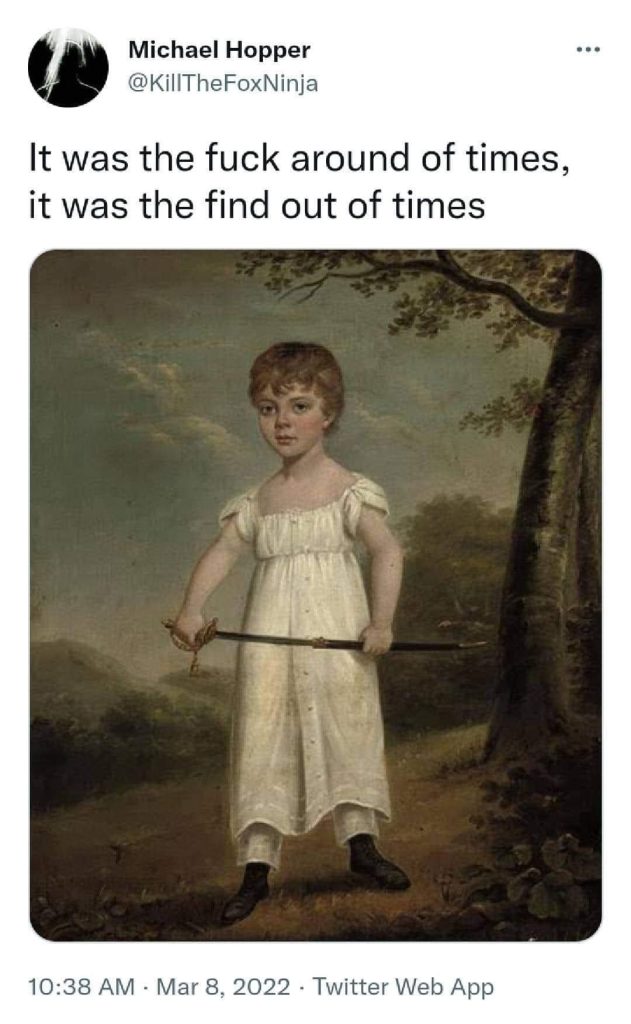
By Richard Sharpe Self Published B/X Level 1
This is an entry in my Wavestone Keep adventure design contest. Which I held to combat the crushing ennui I feel when reviewing too many bad adventures in a row. The challenge was to write and short adventure, eight pages, inspired by the concept and marketing tagline of the Wavestone Keep adventure. Now, to combat my crushing boredom, and the perfectionism which prevents me from working on larger projects, I’m going to review the entries!
This eighteen page DIGEST adventure contains about nine or so rooms/encounters in it. A delightful romp in a simple lighthouse, its got some decent imagery and nice interactivity. A B/X adventure, in the most laudable sense of the phrase. It could also use a bit of a rewrite with the way it formats its entries to put important things first.
This is a retheme from another adventure, a bandit tower. But, instead of bandits we’re rethemed to pirates and a lighthouse … and it works well! A dude in town says he’s looking for wyvern eggs and there’s a tower nearby. You get there, avoid getting eaten outside, negotiate a troll cave, cross a rope bridge, make it up the tower to the nest at the top. What’s notable, here, is this being a Level 1 adventure with a Wyvern, a Troll, a and a Vampire … with only the Wyvern being an outright obstacle. And that leads to a wonderful tone, the kind most of us enjoy, where you’re not just hacking shit down but, rather, scheming and talking to the people inside.
The people inside who wear obvious keys around their necks for that big fat treasure chest sitting in the room. And have big fat ruby rings and earrings on, obviously worth a lot of money. Everyone should know by now that my favorite game as a DM is “how close can I get to luring the party in to attacking the actual Keep in B2?” … and other related issues. I love a friendly NPC with “next level loot here!” signs hanging around their necks! Especially when they are overpowered like the ones here are.
The interactivity here is pretty good. We’ve got the obvious NPC’s to talk to, and the overall “grab the loot/push your luck but the wyvern is probably not a fight” thing going on. Nice traps, a rope bridge, and a decent secrets layout is all pretty good.
Writing can be quite evocative in this. The troll’s goblin buddy is “Her erratic personality will rapidly shift back and forth from screaming rage at the troll for suggesting they eat their nice visitors to simpering, handsy doting on any adventurer who doesn’t violently recoil from her reach, and she is persistent. She only sometimes licks her toothy chops when looking at tasty exposed people flesh.” and “Chains the size of a person’s arm encircle the riveted, black iron coffin and run through its four handles. There is a sliding shutter door at the corpse’s eye level.” Not bad at all! NPC’s are well described and memorable without being over the top. Folk in the local tavern have rumors and are for hire. Rooms have decent, and short, descriptions to relate to players. A one-eyed troll with an acid-melted face is a win
Other things are great also. There’s a small amount of cat & mouse with the wyvern, in a throw-away statement, as the party approach the tower. Good non-linear entry in to the tower. NPC’s in town are good, as are the rumors. The various magic items are solid, including a hood that “A thin layer of elven cadaver skin is stitched inside like a lining. It’s peeling and flaking off the back of the mask. One time only, the wearer can transform into any person’s form whose facial skin is stitched into it.” Sweet! That’s what I want! To wear someone else’s face, literally and figuratively!
Also, though, there’s the formatting …
There are a couple of things going on here that kind of rub me the wrong way. First are the room summaries. I feel like these happen BEFORE The encounter, before the read-aloud. And they get a little long. They are NOT done consistently, which is not what I’m bithcing about, but, also, they seem to be long and just appear. I’m on board with a general overview of how things are supposed to work inthe tower, etc, but, also, you can do it shorter and/or not include it at all in a short adventure and the let the adventure encounter keys speak for themselves.
Then, also, some of the descriptions are a little cumbersome in how they are laid out. Like, that coffin description, with the chains. I think the subject, the coffin, probably needs to come first and then the chains. Unless the chains are just SO FUCKING HUGE as to the most obvious part of the room, then the coffin is. By getting all fancy with the description writing you’ve put the coffin in the secondary place in the description. First things first in descriptions.
And, look, I get it that digest is a format near and dear to many of our hearts. I don’t thin it works well for a lot of text. More reference? Sure. More text/paragraph based? I don’t think so.
But, I’m just fucking quibbling. What this is is a great example of a B/X type adventure that is short. It feels like a good adventure, and like a good BX adventure.
(Richard, I declare you Not The Winner THusfar, thus making it irrelevant for me to judge if the page count, in digest form, qualifies.)
Snag a copy here:
https://www.drivethrurpg.com/product/392795/Wyverns-Roost?1892600


